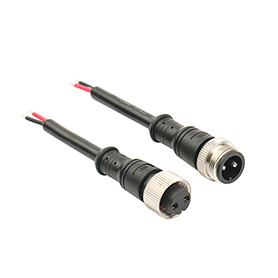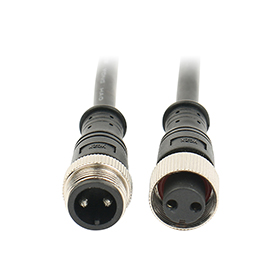News


News

How to Choose the Right M12 Aviation Plug Connector: A Comprehensive Guide
Release time:2025-04-01
viewed:287
Selecting the right M12 aviation plug connector is critical for ensuring reliable performance in aerospace, defense, and industrial applications. From fighter jets to factory robots, these compact yet rugged connectors must withstand extreme temperatures, vibrations, and harsh environments. This guide breaks down the key factors to consider when choosing an M12 aviation connector, helping engineers and procurement teams make informed decisions.

IP67: Protects against dust and temporary submersion (1m depth for 30 minutes). Ideal for aircraft interiors or ground support equipment.
IP69K: Resists high-pressure water jets (80°C at 1,450 PSI). Essential for components exposed to frequent washdowns (e.g., engine bays, UAVs in rainy climates).
EMI/RFI Shielding: Choose connectors with metal braiding or ferrite cores for avionics systems in electromagnetic-heavy environments.
Commercial Aviation: -55°C to +125°C (e.g., cabin lighting, in-flight entertainment).
Military/Industrial: -65°C to +200°C (e.g., engine sensors, hypersonic drone systems).
Case Study: A Mars rover prototype used M12 connectors with PEEK insulation to survive -120°C nights and +20°C daytime cycles.
Signal Connectors: 3–5 pins, low current (≤1A). Used for avionics communication (e.g., CAN bus, Ethernet).
Power Connectors: 4–12 pins, high current (up to 16A). Critical for UAV battery packs or aircraft actuators.
Low Voltage (≤60V): Standard gold-plated contacts suffice for most avionics.
High Voltage (400V+): Opt for silver-plated contacts with arc-resistant designs (e.g., EVTOL aircraft charging systems).
Pro Tip: Ensure contact resistance stays below 5mΩ to prevent overheating in high-current applications.
Spring-Loaded Contacts: Maintain stable connections in high-vibration zones (e.g., helicopter rotor systems).
Threaded vs. Push-Pull Coupling:
Threaded (M12x1): Ideal for high-vibration environments (tested to MIL-STD-810G).
Push-Pull: Faster mating for maintenance-heavy systems (e.g., ground crew equipment).
Commercial Grade: 500+ cycles (e.g., passenger aircraft infotainment).
Military Grade: 1,000+ cycles (e.g., fighter jet weapon systems).

Stainless Steel (316L): Ultimate corrosion resistance for marine or coastal UAVs.
Aluminum: Lightweight choice for weight-sensitive drones, but less durable than steel.
Composite (PEEK/PA66): Reduces weight by 30% vs. metal, ideal for satellites.
Gold Plating (0.2–0.5µm): Low resistance, ideal for low-voltage signals.
Silver Plating: Higher conductivity for power transmission but prone to sulfide tarnishing.
MIL-DTL-26482: Mandatory for U.S. military aircraft (vibration, salt spray).
EN 3645: European aviation standard for fire resistance and smoke toxicity.
IEC 61076-2-111: Industrial automation compliance for factory robots.
RoHS/REACH: Required for connectors used in the EU or eco-conscious projects.
Nadcap AC7121: Special accreditation for aerospace manufacturing processes.
TE Connectivity (DEUTSCH): Renowned for military-grade M12 connectors.
Amphenol (Souriau): Leader in lightweight composites for aerospace.
Lemo: Preferred for high-density signal applications.
Initial Cost: Industrial-grade connectors start at $10; aerospace versions exceed $200.
Long-Term Savings: High-quality connectors reduce downtime (e.g., a $500 connector preventing $50k in flight delays).
Case Study: Boeing 787’s use of TE Connectivity M12 connectors reduced in-flight electrical failures by 40%.
Choosing the right M12 aviation plug connector requires balancing environmental needs, electrical specs, mechanical demands, and budget. Whether powering a next-gen drone or securing avionics in a commercial jet, the ideal connector ensures reliability, safety, and efficiency.